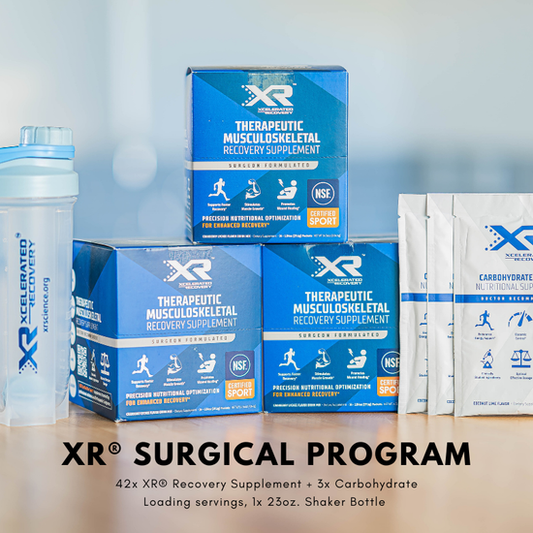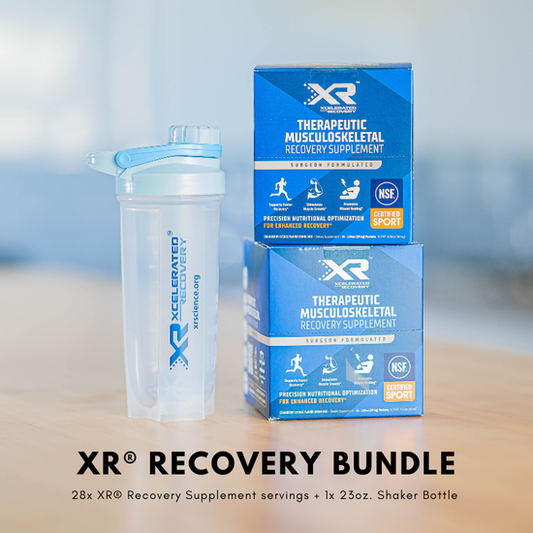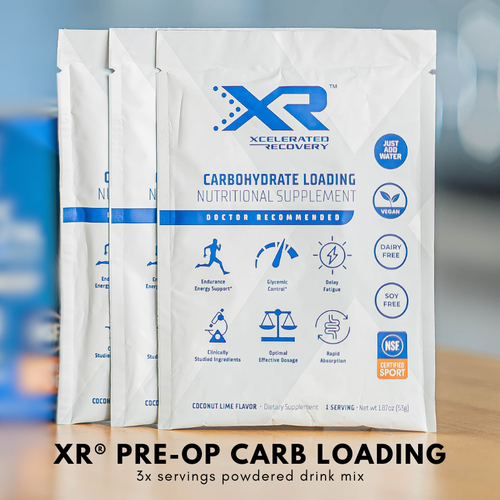
Prehabilitation: Get Fit For Surgery
Share
Authors: Dr. Reza Jazayeri & Dr. Paul Sethi
Surgery places significant stress on your body. Similar to an athlete training for a competitive event, preparing for surgery requires physical, mental and nutritional optimization.
The more physically fit and nutritionally prepared a patient is for surgery, the higher the level of clinical success. What if there was a way to prepare for surgery, both physically and mentally, that could lead to better outcomes and a quicker recovery?
Prehabilitation, also known as prehab therapy, is a concept that has gained traction in recent years and refers to the process of preparing for surgery by engaging in physical and nutritional therapy prior to the procedure. This strategy is quickly becoming the standard for elective orthopedic surgeries. The goal of prehabilitation is to enhance a patient's physical condition and overall well-being prior to surgery, resulting in improved outcomes and a quicker recovery.
This proactive approach aims to improve movement, flexibility, and strength before the surgery, in contrast to traditional physical therapy which typically starts after the surgery to help restore lost strength, balance, and range of motion. It is also to enhance the functional capacity of the patient to prepare and manage the stress of surgery and the required rehabilitation.
Prehab therapy allows the patient to have a role in controlling their recovery, setting their body up for a successful recovery after surgery. It is beneficial for older patients undergoing joint replacement and crucial for athletes looking to return to sports in the shortest and safest manner possible.
9 Top Benefits of Prehabilitation
Evidence-based research shows prehabilitation:
- Decreases pain after surgery
- Improves patient reported outcomes
- Prepares patients for the physical challenges faced following treatment
- Improves postoperative functional performance
- Faster return to sports
- Improves muscle strength
- Improves psychological outcomes
- Decreases hospital readmissions
- Reduces health care costs
Combining prehabilitation with nutritional supplementation using a muscle-centric diet plan can be especially effective. Studies have shown that prehabilitation programs that incorporate exercise, nutrition, and other therapies can lead to significant improvements in pain and function for patients undergoing total knee arthroplasty (Aytekin et al., 2019). Additionally, a systematic review found that preoperative rehabilitation in patients planning for joint replacement surgery leads to better outcomes (Yin et al., 2022).
Nutritional prehabilitation plays an important role in the recovery process. Poor nutritional status is linked to higher-postoperative complications and a longer recovery time (Briguglio et al., 2022). By incorporating a nutrient-dense diet plan and supplements into prehabilitation, patients can improve their overall health, which in turn can lead to better outcomes and a faster recovery.
Physical prehabilitation is also an important aspect of the recovery process. Studies have shown that prehabilitation programs that focus on strength and motion can lead to significant improvements in postoperative strength, motion and a faster return to sport in athletes (Cunha et al., 2022). Additionally, “The role of nutrition in prehabilitation prior to ACL surgery has been demonstrated as it may help to minimize the time lost from sports and improve the chances of a successful return. (Howard et al., 2022)
Nutritional and physical rehabilitation is an effective strategy for improving outcomes and recovery time for patients undergoing surgery. By incorporating physical and nutritional therapy prior to surgery leads to better outcomes and a faster recovery. XR’s perioperative optimization program includes access to the myHealthTrack app, which provides prehabilitation exercises that are specific to the patient's procedure.
References:
- Aytekin, E., et al. (2019). The effect of a 12 week prehabilitation program on pain and function for patients undergoing total knee arthroplasty: A prospective controlled study. Journal of Clinical Orthopaedics and Trauma.
- Briguglio, M., et al. (2022). Nutritional and physical prehabilitation in elective orthopedic surgery: Rationale and proposal for implementation. Therapeutics and Clinical Risk Management.
- Cunha, J., et al. (2022). ACL prehabilitation improves postoperative strength and motion and return to sport in athletes. Arthroscopy, Sports Medicine, and Rehabilitation.
- Gometz, A., et al. (2018). The effectiveness of prehabilitation (prehab) in both functional and economic outcomes following spinal surgery: A systematic review. Cureus.
- Michael, C. M., et al. (2021). Prehabilitation exercise therapy for cancer: A systematic review and meta-analysis. Cancer Medicine.
- Rooks, D. S., et al. (2006). Effect of preoperative exercise on measures of functional status in men and women undergoing total hip and knee arthroplasty. Arthritis & Rheumatism.
- Su, W., et al. (2022). The effects of preoperative rehabilitation on pain and functional outcome after total knee arthroplasty: A meta-analysis of randomized controlled trials. Journal of Orthopaedic Surgery and Research.
- Villers, J. F., et al. (2020). Physical therapy prehabilitation on a reverse total shoulder replacement candidate: A case study. Journal of Physical Therapy Science.
- Yin, H., et al. (2022). A systematic review and meta-analysis on randomized control trials for preoperative rehabilitation in patients planning for joint replacement surgery for better outcomes. Journal of Healthcare Engineering.
- Howard, E.E.; Margolis, L.M.; Fussell, M.A.; Rios, C.G.; Meisterling, E.M.; Lena, C.J.; Pasiakos, S.M.; Rodriguez, N.R. Effect of High-Protein Diets on Integrated Myofibrillar Protein Synthesis before Anterior Cruciate Ligament Reconstruction: A Randomized Controlled Pilot Study. Nutrients 2022, 14, 563.








